In the culinary realm, where the alchemy of flavors and techniques dance together, the question of whether you can use a roasting pan on the stovetop sparks a tantalizing intrigue.
It’s as if the kitchen gods are whispering secrets of versatility, urging us to explore the boundaries of our cookware. Imagine the sizzle of creativity meeting the robust embrace of a roasting pan on the stovetop – a culinary rendezvous that promises to transcend the ordinary and ignite the flames of experimentation.
So, let’s embark on this gastronomic odyssey, where the conventional meets the unexpected, and the roasting pan becomes not just an oven-bound accomplice but a bold partner in crime on the stovetop stage.
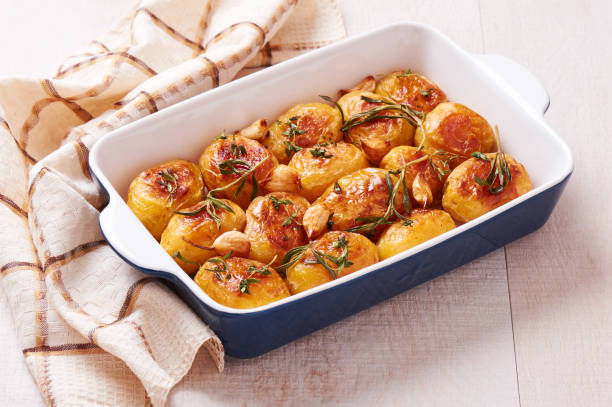
Can You Use Roasting Pan On Stovetop
No, it’s not recommended to use a roasting pan on the stovetop. Roasting pans are designed for oven use, and using them on the stovetop can lead to uneven heating, potential damage to the pan, and safety hazards.
The Purpose of Roasting Pans
Roasting pans, with their high sides and roasting racks, are specifically crafted for the dry heat environment of an oven. The design promotes air circulation, ensuring that meats roast to perfection. Attempting to use a roasting pan on the stovetop may lead to uneven heating, compromising the quality of your culinary creations.
Safety Hazards and Potential Damage
The stovetop’s direct flame poses a threat to the integrity of a roasting pan. The materials used in these pans may not withstand the intense heat, resulting in warping or even permanent damage. Moreover, the risk of hot spots and scorching increases, making it a potentially dangerous culinary experiment.
Alternative Cooking Methods
Instead of risking your roasting pan, consider alternative methods for stovetop cooking. Utilize pans designed for stovetop use, such as skillets or sauté pans, to ensure a safe and effective cooking experience. Save the roasting pan for its intended purpose – the oven.
Understanding Roasting Pans
Roasting pans, essential kitchenware for culinary enthusiasts, are specialized cookware designed for roasting meats and vegetables in the oven. Crafted from various materials like stainless steel, cast iron, and aluminum, these pans offer durability and heat retention.
The distinct characteristics of roasting pans include sturdy handles for easy maneuvering and high sides to contain juices and prevent splattering. With their even heat distribution, roasting pans ensure uniform cooking and caramelization.
Whether it’s a traditional Sunday roast or holiday turkey, these versatile pans guarantee mouthwatering results. So, invest in a quality roasting pan to elevate your oven-roasting game and delight your taste buds.
Oven Use of Roasting Pans
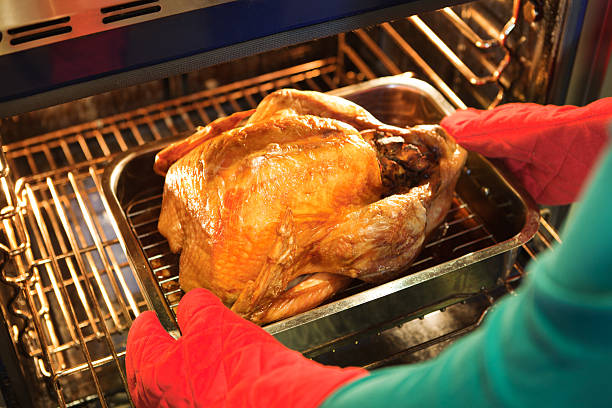
Roasting pans, a staple in oven cooking, facilitate traditional roasting methods like slow roasting, braising, and baking. Their spacious design accommodates large cuts of meat, whole poultry, and hearty vegetables, perfect for family dinners or special occasions.
The benefits of using roasting pans are manifold, including even heat distribution for consistent cooking and caramelization, as well as easy cleanup thanks to their non-stick surfaces.
From succulent roast chicken with crispy skin to tender prime rib with savory au jus, roasting pans unlock a world of culinary possibilities. Popular recipes like roasted vegetables, baked ham, and herb-crusted pork loin showcase the versatility and convenience of these kitchen essentials.
So, explore the art of oven roasting with a quality roasting pan and elevate your cooking experience to new heights.
Stovetop Cooking Challenges
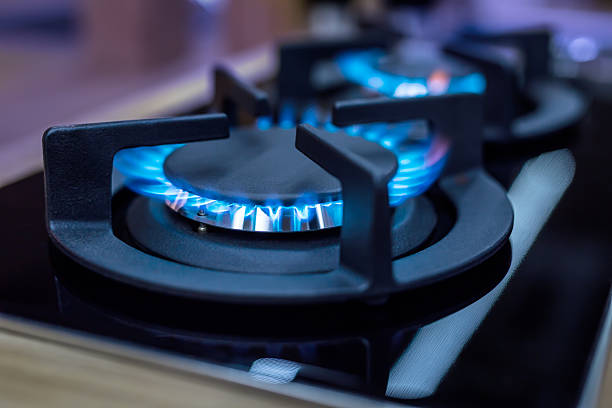
Stovetop cooking presents distinct challenges compared to oven cooking due to differences in heat distribution and cooking methods. While the oven provides indirect, even heat, stovetop cooking relies on direct heat from burners, requiring more active monitoring and frequent stirring or flipping of ingredients.
When attempting to use roasting pans on the stovetop, potential issues arise, primarily because roasting pans are designed for oven use, not stovetop cooking. Their flat bottoms may not be conducive to proper heat distribution on burners, leading to uneven cooking or hot spots.
The materials commonly used in roasting pans, such as stainless steel or non-stick coatings, may not withstand high stovetop temperatures, risking warping, damage, or even releasing harmful fumes.
Safety concerns abound when using roasting pans on the stovetop, including the risk of burns from hot handles or splattering oil, as well as the potential for damaging both the cookware and the stovetop itself.
It’s crucial to exercise caution and adhere to manufacturer recommendations when considering alternative cooking methods with roasting pans.
Unlocking the Mystery: Using Roasting Pans on the Stovetop
Unlocking the mystery of using roasting pans on the stovetop involves careful consideration of various factors to determine feasibility and effectiveness. While roasting pans are primarily designed for oven use, some models may be suitable for stovetop cooking, depending on their construction and materials.
Factors influencing suitability include the thickness and conductivity of the pan’s material, with options like stainless steel or cast iron generally performing better on stovetops due to their heat retention properties.
Benefits of using roasting pans on the stovetop include versatility, allowing for one-pot cooking of dishes that require both stovetop and oven preparation stages. Roasting pans with flat bottoms and sturdy handles can facilitate even heat distribution and easy maneuvering on stovetop burners.
However, drawbacks such as the potential for uneven heating, warping, or damage to non-stick coatings must be considered. Proper care, attention, and adherence to manufacturer guidelines are essential when attempting stovetop cooking with roasting pans to unlock their full potential while minimizing risks.
Alternatives for Stovetop Cooking
When exploring alternatives for stovetop cooking, there’s a myriad of specialized cookware designed specifically for this purpose. From classic options like frying pans and saucepans to more specialized tools such as sauté pans, griddles, and woks, each offers unique benefits tailored to different cooking techniques and recipes.
Transitioning from oven to stovetop for specific recipes requires thoughtful adaptation and consideration of cooking times, heat levels, and ingredients. For example, braised dishes like beef stew or chicken cacciatore can be started in the oven for tenderizing before finishing on the stovetop to reduce sauces or intensify flavors.
Creative cooking solutions for stovetop convenience include utilizing multi-functional cookware like Dutch ovens or skillet pans, which seamlessly transition from stovetop to oven, offering versatility and efficiency in one pot.
Exploring techniques like stir-frying, searing, or steaming opens up a world of possibilities for quick and flavorful stovetop meals. By embracing alternative cookware and innovative cooking methods, home chefs can unlock the full potential of stovetop cooking and elevate their culinary repertoire.
What Factors Should You Consider When Buying A Roasting Pan?
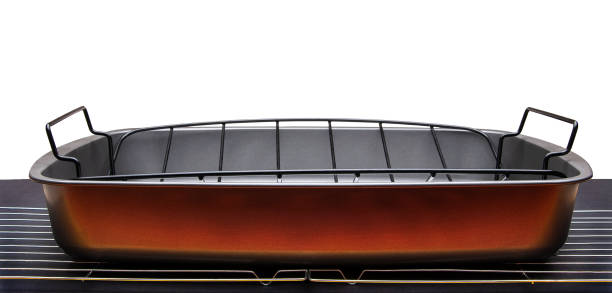
Here is a list of factors you need to consider before buying a roasting pan.
Size of the Roasting Pan
When buying a roasting pan, the size is a crucial factor to consider. The size of the roasting pan should be adequate to accommodate the types of food you plan to cook, whether it’s a whole turkey, a large roast, or vegetables.
Consider the capacity of the pan in relation to the size of your oven and the number of servings you typically prepare. A pan that is too small may not fit your food comfortably or allow for proper air circulation, leading to uneven cooking.
Conversely, a pan that is too large may be cumbersome to handle and store, as well as inefficient in terms of energy usage. Therefore, selecting the right size roasting pan ensures optimal cooking results and enhances your overall culinary experience.
The Shape of the Roasting Pan
Another important factor to consider when buying a roasting pan is its shape. Roasting pans come in various shapes, such as rectangular, oval, and square. Each shape offers distinct advantages depending on the type of food you plan to cook and your cooking preferences.
Rectangular roasting pans are versatile and commonly used for roasting large cuts of meat, such as whole turkeys or roasts. Their straight sides provide ample space for arranging food in a single layer, allowing for even cooking and caramelization.
Oval roasting pans are ideal for cooking poultry, such as whole chickens or ducks, as their shape accommodates the bird’s natural form. The curved edges help to trap juices and prevent splattering, resulting in moist and flavorful meat.
Square roasting pans are well-suited for smaller cuts of meat, vegetables, or casseroles. Their compact size makes them convenient for everyday cooking and for fitting into smaller ovens or storage spaces.
Ultimately, the shape of the roasting pan should complement the types of dishes you frequently prepare and your kitchen setup. Consider your cooking needs and preferences when selecting the shape that best suits your culinary adventures.
Weight of the Pan
The weight of the roasting pan is another crucial factor to consider when making a purchase. The weight affects not only the ease of handling but also the pan’s durability and cooking performance.
A heavier roasting pan generally indicates better quality and durability. It provides stability when placing it in and removing it from the oven, reducing the risk of spills or accidents. Additionally, a heavier pan tends to distribute heat more evenly, resulting in more consistent cooking results.
However, it’s essential to find a balance between weight and practicality. While a heavy-duty roasting pan may offer superior cooking performance, it can be cumbersome to lift and maneuver, especially when filled with food. Consider your strength and comfort level when choosing the weight of the pan.
Lighter roasting pans may be more manageable to handle but may not offer the same level of durability or heat retention. They may also be prone to warping or bending over time, particularly at high temperatures.
Ultimately, the ideal weight of the roasting pan depends on your individual preferences and cooking needs. Consider factors such as the frequency of use, the types of dishes you plan to cook, and your comfort level when handling heavier cookware. By striking the right balance, you can find a roasting pan that meets your needs and enhances your cooking experience.
Best Roasting Pans that Can Be Used on Stovetops
Are you unsure about the ideal roasting pan to use? You don’t need to search any farther!
The best roasting pans for all kinds of stovetops are listed here, with a solid base.
Pick #1 – The Viking Large Roasting Pans
The Viking Large Roasting Pan is an excellent choice for those seeking a versatile pan that can be used both in the oven and on the stovetop. Made from durable stainless steel, this roasting pan offers even heat distribution and superior cooking performance.
Its large size provides ample space for roasting meats and vegetables, making it perfect for family dinners or entertaining guests. The Viking Large Roasting Pan features sturdy handles for easy lifting and maneuvering, as well as a flat bottom that ensures stability on stovetop burners.
Whether you’re searing meats on the stovetop or roasting a turkey in the oven, this versatile pan can handle it all. Its durable construction and multi-functional design make it a must-have addition to any kitchen. With the Viking Large Roasting Pan, you can achieve professional-quality results every time.
Pick #2 – Calphalon LRS1805P Contemporary 16-Inch Roasting Pan
The Calphalon LRS1805P Contemporary 16-Inch Roasting Pan is another top choice for those seeking a roasting pan that excels on both the stovetop and in the oven. Crafted from heavy-gauge aluminum with a hard-anodized exterior, this pan offers exceptional durability and heat conductivity.
Its large size and non-stick interior make it perfect for roasting meats, poultry, and vegetables with ease. The Calphalon Contemporary Roasting Pan features triple-layer non-stick coating for effortless food release and easy cleanup, making it ideal for busy home cooks.
With its sturdy stainless steel handles and flat bottom, this roasting pan provides stability and control when transferring from stovetop to oven. Whether you’re searing, roasting, or braising, the Calphalon Contemporary Roasting Pan delivers reliable performance and professional-quality results every time.
Pick #3 – Granite Ware 18-Inch Covered Oval Roasting Pan
The Granite Ware 18-Inch Covered Oval Roasting Pan is a classic choice for those seeking a versatile and affordable option that can be used on both stovetops and in the oven. Made from carbon steel core with a porcelain enamel finish, this roasting pan offers excellent heat distribution and durability.
Its spacious oval shape provides ample room for roasting large cuts of meat, poultry, or vegetables, making it perfect for family gatherings or holiday meals. The Granite Ware Roasting Pan comes with a tight-fitting lid, which helps to lock in moisture and flavor while cooking.
With its lightweight design and easy-to-clean surface, this roasting pan is ideal for everyday use. Whether you’re searing, roasting, or simmering, the Granite Ware Oval Roasting Pan delivers reliable performance and delicious results every time, making it a valuable addition to any kitchen.
Pick #4 – All-Clad Flared Roaster
The All-Clad Flared Roaster stands out as a premium option for those seeking top-notch quality and performance in a roasting pan that can seamlessly transition between stovetop and oven cooking. Crafted from high-quality stainless steel with a bonded aluminum core, this roaster ensures exceptional heat distribution and retention for even cooking results.
Its flared edges not only make pouring and basting easy but also promote proper evaporation for richly flavored pan sauces. The All-Clad Flared Roaster features large handles for secure grip and comfortable handling, even when wearing oven mitts.
With its generous size and versatile design, this roasting pan is perfect for roasting large cuts of meat, poultry, or vegetables, making it an ideal choice for holiday feasts or special occasions. Whether you’re searing, roasting, or braising, the All-Clad Flared Roaster delivers professional-level performance and exceptional culinary results, earning its place as a staple in any kitchen arsenal.
Pick #5 – Cuisinart 16-Inch Roasting Pan with Rack
The Cuisinart 16-Inch Roasting Pan with Rack is a reliable choice for those seeking a roasting pan that offers convenience, versatility, and excellent cooking performance. Crafted from durable stainless steel, this roasting pan is designed to withstand high temperatures and provide even heat distribution for consistent results.
Its 16-inch size is spacious enough to accommodate large cuts of meat, poultry, or vegetables, making it ideal for family dinners or entertaining guests. The included rack elevates food, allowing air to circulate evenly for optimal roasting and browning.
The Cuisinart Roasting Pan features wide-grip handles that provide a secure hold for easy lifting and carrying, even when wearing oven mitts. Its dishwasher-safe design ensures hassle-free cleanup, making it perfect for busy home cooks.
Whether you’re roasting a turkey for Thanksgiving or preparing a Sunday roast, the Cuisinart 16-Inch Roasting Pan with Rack delivers reliable performance and delicious results, making it a valuable addition to any kitchen.
Tips and Recommendations
When considering using roasting pans on the stovetop, adhere to safety guidelines to prevent accidents and ensure optimal results. Firstly, verify the manufacturer’s recommendations for stovetop compatibility and limitations.
Always use roasting pans with flat bottoms to ensure even heat distribution and stability on burners. Avoid high heat settings, as excessive temperatures can damage the pan’s surface or cause warping.
Use caution when handling hot pans and always use oven mitts or pot holders to prevent burns. To prolong the lifespan of roasting pans, practice regular maintenance and care. Hand wash pans with mild detergent and avoid abrasive scrubbers to preserve non-stick coatings.
For stainless steel or cast iron pans, dry thoroughly after washing to prevent rusting. Periodically check for signs of wear, such as scratches or warping, and replace pans if necessary to maintain cooking performance and safety.
Seek expert opinions and advice on stovetop usage from culinary professionals or reputable sources. They can provide valuable insights, tips, and troubleshooting advice to optimize your stovetop cooking experience with roasting pans.
By following these tips and recommendations, you can safely and effectively use roasting pans on the stovetop while maximizing their lifespan and culinary potential.
Real-Life Experiences
Real-life experiences of using roasting pans on the stovetop vary, with some individuals sharing testimonials of successful experiments while others offer cautionary tales.
A. Testimonials:
- “I’ve used my roasting pan on the stovetop to sear meats before finishing them in the oven, and it works like a charm! The even heat distribution gives a perfect sear every time.”
- “I tried using my roasting pan on the stovetop for a stir-fry recipe, but it didn’t work well. The pan didn’t heat evenly, and the handles got too hot to handle safely.”
B. Success stories and cautionary tales:
- “Using my roasting pan on the stovetop has been a game-changer for me. I can easily transition from searing to braising without dirtying multiple pots and pans.”
- “I attempted to use my roasting pan on the stovetop for a high-heat cooking method, and it ended up warping. Now I stick to using it only in the oven.”
C. Community insights and discussions:
- Online forums and social media platforms host discussions on using roasting pans on the stovetop, with users sharing their experiences, tips, and troubleshooting advice.
- Some communities caution against using roasting pans on the stovetop due to safety concerns and potential damage to the cookware.
Overall, real-life experiences highlight the potential benefits and pitfalls of using roasting pans on the stovetop, emphasizing the importance of caution and experimentation.
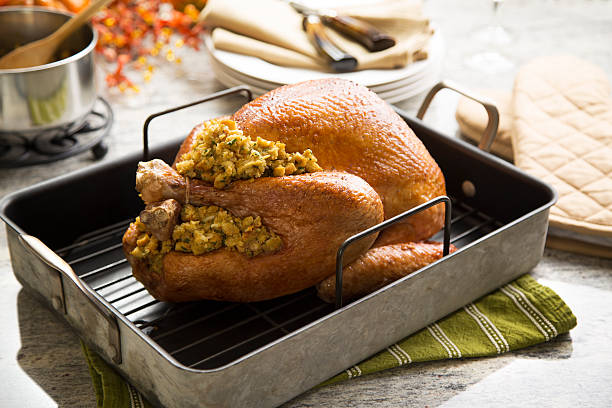
Frequently Asked Questions (FAQs) – Using A Roasting Pan On The Stovetop
Can I use a roasting pan on the stovetop?
Absolutely! Our versatile roasting pans are designed to be stovetop-friendly. With sturdy construction and heat-resistant materials, you can seamlessly transition from oven to stovetop for a variety of cooking techniques.
Are roasting pans suitable for all stovetop types?
Yes, our roasting pans are compatible with gas, electric, and induction stovetops. Their adaptability ensures you can achieve consistent and delicious results regardless of your cooking appliance.
What types of dishes can I prepare using a roasting pan on the stovetop?
The possibilities are endless! From searing meats and sautéing vegetables to crafting delectable sauces, our roasting pans empower you to explore a wide range of culinary creations on the stovetop.
How do I maintain the quality of my roasting pan when using it on the stovetop?
Maintaining your roasting pan is easy. Ensure even heat distribution by using medium to low heat settings and avoid sudden temperature changes. Regular cleaning with mild detergents will keep your roasting pan in top-notch condition.
Can I use my roasting pan for high-heat cooking on the stovetop?
Certainly! Our roasting pans are built to withstand high-heat cooking. However, it’s recommended to adhere to the manufacturer’s guidelines regarding maximum temperature limits for optimal performance and durability.
Will using a roasting pan on the stovetop affect the quality of my meals?
Quite the opposite! Using a roasting pan on the stovetop enhances the versatility of your cooking. You can achieve exceptional flavor and texture by incorporating both oven and stovetop techniques in your recipes.
Are there any safety precautions to consider when using a roasting pan on the stovetop?
Safety is paramount. Always use oven mitts or handles designed to stay cool on the stovetop. Additionally, ensure proper ventilation and avoid overcrowding the pan to prevent accidental spills.
Can I use a glass roasting pan on the stovetop?
While glass roasting pans are generally oven-safe, it’s advisable to check the manufacturer’s instructions for stovetop use. Some glass pans may not be suitable for direct stovetop heat.
How do I choose the right size roasting pan for stovetop cooking?
Select a roasting pan that comfortably fits your stovetop burner size. This ensures even heat distribution and efficient cooking. Refer to the pan’s dimensions and your stovetop specifications for an ideal match.
Where can I find stovetop-friendly recipes for my roasting pan?
Explore our recipe collection or various cooking websites for a plethora of stovetop-friendly recipes tailored for roasting pans. You’ll discover exciting dishes that showcase the versatility of using a roasting pan on the stovetop!
Conclusion
In conclusion, while the versatility of a roasting pan is undoubtedly valuable in the kitchen, it is important to exercise caution when considering its use on the stovetop.
While some roasting pans may be designed to withstand stovetop heat, not all are equipped for this purpose. It is crucial to check the manufacturer’s guidelines and product specifications to ensure the pan’s compatibility with stovetop use.
Using a roasting pan on the stovetop without proper confirmation can lead to damage, potential safety hazards, or even the compromise of the cooking performance. Therefore, it is advisable to utilize the roasting pan within its intended usage parameters to maximize both safety and cooking efficiency.